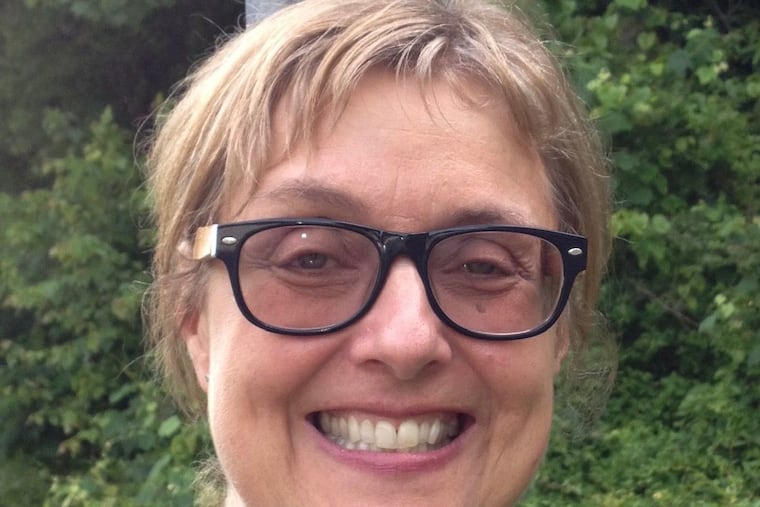Elise Vider, advocate for Philly’s historic buildings and urban values, dies at 69
Even when she was fighting a hopeless battle to save a historic building, Ms. Vider entered the fray with joyish delight and a twinkle in her eye.

Elise Vider began her journalism career in Hartford, Conn., in the late 1970s, at a time when downtown stores were seeing their customers lured away by suburban shopping malls. To counter the competition, city officials ordered the demolition of blocks of old buildings to create parking lots for shoppers. Horrified by the destruction, Ms. Vider started writing columns that focused on the intersection of historic preservation and real estate development.
Those stories, which examined Hartford’s self-destructive urban renewal policies, shaped Ms. Vider’s worldview and would ultimately lead her to a career in Philadelphia as an impassioned advocate for preservation and urban design. As a founding member of the Design Advocacy Group, and later as the chair of its steering committee, she fought the construction of a massive Thomas Jefferson University Hospital parking garage on Chestnut Street and advocated for the preservation of homes and stores in the Sharswood neighborhood.
Ms. Vider, who worked for many years at the Preservation Alliance for Greater Philadelphia, died Saturday, Oct. 2, from complications caused by a benign brain tumor, just two months shy of her 70th birthday.
She had also spent nearly eight years as director of communications for the Center City District and later helped the Building Industry Association manage its messaging. Until she became ill in 2020, she was a member of Philadelphia’s Civic Design Review board, which evaluates and makes recommendations on development proposals. Ms. Vider was one of the few to object to the construction of a glass apartment tower behind the Cathedral Basilica of SS. Peter and Paul on Logan Square.
Ms. Vider, who was married to The Inquirer’s former political columnist Dick Polman and was a friend to dozens of people in Philadelphia’s urban design community, including me, came relatively late to her career as a design advocate. After spending the late 1980s raising two children with Polman in Haddonfield, she decided to enroll in Penn’s master’s program in historic preservation. She was nearly 40 when she graduated in 1991.
“She didn’t just want to report and observe; she wanted to make a difference,” Polman said. “She knew the degree would give her credibility, and she saw it as a way to enhance her advocacy for the built environment.”
Even before obtaining her master’s, Ms. Vider was active in the preservation movement. She was the chair of Haddonfield’s preservation commission, which had the power to examine the impact of proposed developments on the town’s historic buildings. After the commission held up a large project to demand design changes, she had to face down a room full of construction workers who were unhappy with the delay, Polman recalled.
Ms. Vider was also deeply interested in Philadelphia and its struggle to manage its rich architectural heritage. In 2002, she joined with several prominent city architects to establish the Design Advocacy Group, a loose affiliation of design-minded citizens. Although DAG had no paid staff or office, it contributed to debates over development by organizing free public forums with designers and policymakers, and writing op-eds and position papers. In 2011, she organized a yearlong series of events to promote innovative approaches to preservation, called Gray Area.
After taking over as the chair of the steering committee in 2015, Ms. Vider used the communication skills she had gleaned from her journalism career to improve DAG’s website and messaging. She also helped secure a grant from the William Penn Foundation to turn the organization into a registered nonprofit. But even after those upgrades, she resisted turning DAG into a more formal operation, preferring to see it remain a citizen-led group.
Although Ms. Vider lived in Haddonfield for many years, she always saw herself as an urbanite. Born in Newark, N.J., she grew up in Brooklyn, N.Y., where she attended the massive James Madison High School, along with fellow DAG founder and former Philadelphia Deputy Mayor Alan Greenberger. While still in high school, Ms. Vider, who had an engaging smile, was a runner-up in a Miss Brooklyn beauty pageant. After her younger child left for college in 2005, she and Polman moved to Philadelphia.
Even when she knew she was fighting a hopeless battle to save a historic building, her fellow DAG members recalled, Ms. Vider entered the fray with visible joy and a twinkle in her eye. She considered the policy debates and the effort to find common ground as important as the cause itself. But while she had the disciplined skills of an impartial moderator, she “really hated when old buildings were torn down for parking garages,” Polman said.
Ms. Vider’s interests extended beyond cities and design. She was a voracious consumer of novels, movies, and television shows. When her benign brain tumor began to press against her optic nerve earlier this year, rendering her blind, she would still listen to The Rachel Maddow Show every evening and have Polman read his political columns aloud.
Besides her jobs at the Alliance and Center City District, Ms. Vider spent many years as a volunteer on Fridays at the Fair Food Farmstand in Reading Terminal Market. Paul Steinke, who was running the market at the time and is now the director of the Preservation Alliance, would frequently see her ringing up customers’ orders. “I would always stop to chat, and we would have all the city’s problems solved within 15 minutes,” he wrote in a Facebook post.
In addition to her husband of 45 years, Ms. Vider is survived by two children, Josh and Franke, and two grandchildren. A memorial service will be Saturday, Oct. 23, at the Philadelphia Ethical Society at 1906 Rittenhouse Square.